My
List |
Addition Date
|
Target
|
Mission
|
Instrument
|
Size
|

|
2025-07-02 |
Sky
|
SPHEREx
|
Spectro-Photometer
|
3406x1684x3 |

|
-
PIA26354:
-
SPHEREx Vela Molecular Ridge
Full Resolution:
TIFF
(17.03 MB)
JPEG
(878.8 kB)
|

|
2023-12-22 |
|
|
James Webb Space Telescope
IRAS
Spitzer Space Telescope
|
2686x1503x3 |
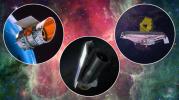
|
-
PIA25790:
-
Three of NASA's Infrared Telescopes
Full Resolution:
TIFF
(12.05 MB)
JPEG
(317.2 kB)
|

|
2022-11-22 |
Orion Nebula
|
Herschel Space Observatory
Spitzer Space Telescope
Wide-field Infrared Survey Explorer (WISE)
|
Herschel Telescope
Spitzer Space Telescope
WISE Telescope
|
9036x7646x3 |
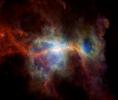
|
-
PIA25434:
-
Orion Nebula in Infrared
Full Resolution:
TIFF
(108.7 MB)
JPEG
(1.603 MB)
|

|
2022-11-11 |
Eagle Nebula
|
Wide-field Infrared Survey Explorer (WISE)
|
|
3400x3400x3 |
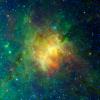
|
-
PIA25433:
-
The Eagle Nebula Observed by WISE
Full Resolution:
TIFF
(34.69 MB)
JPEG
(1.01 MB)
|

|
2021-10-25 |
|
Spitzer Space Telescope
|
Spitzer Space Telescope
|
3542x3542x3 |
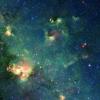
|
-
PIA24579:
-
Godzilla Nebula Imaged by Spitzer
Full Resolution:
TIFF
(37.65 MB)
JPEG
(2.228 MB)
|

|
2021-08-17 |
|
Spitzer Space Telescope
|
Spitzer Space Telescope
|
4800x2700x3 |
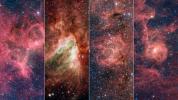
|
-
PIA24577:
-
Four Famous Nebulae
Full Resolution:
TIFF
(38.9 MB)
JPEG
(2.529 MB)
|

|
2021-08-17 |
|
|
|
4800x2700x3 |
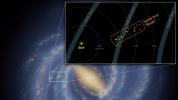
|
-
PIA24576:
-
A Break in the Milky Way's Sagittarius Arm
Full Resolution:
TIFF
(20.62 MB)
JPEG
(897.7 kB)
|

|
2020-11-18 |
|
Galaxy Evolution Explorer (GALEX)
|
|
1920x1080x3 |
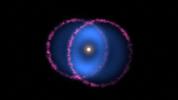
|
-
PIA23868:
-
Geometry of the Blue Ring Nebula (Animation)
Full Resolution:
TIFF
(2.374 MB)
JPEG
(66.08 kB)
|

|
2020-11-18 |
|
Galaxy Evolution Explorer (GALEX)
|
|
4791x2695x3 |
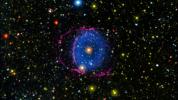
|
-
PIA23867:
-
The Blue Ring Nebula
Full Resolution:
TIFF
(26.12 MB)
JPEG
(761.9 kB)
|

|
2020-08-25 |
|
Spitzer Space Telescope
|
Spitzer Space Telescope
|
2000x1125x3 |
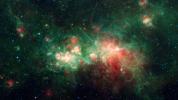
|
-
PIA23865:
-
Spitzer Image of Star Factory W51
Full Resolution:
TIFF
(6.752 MB)
JPEG
(432.4 kB)
|

|
2020-04-17 |
|
Spitzer Space Telescope
|
Spitzer Space Telescope
|
3317x1902x3 |
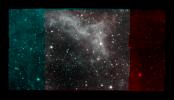
|
-
PIA23650:
-
Spitzer California Nebula Mosaic
Full Resolution:
TIFF
(12.09 MB)
JPEG
(759 kB)
|

|
2020-01-27 |
|
Spitzer Space Telescope
|
Spitzer Space Telescope
|
8832x4968x3 |
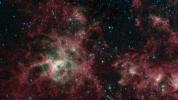
|
-
PIA23647:
-
Tarantula Nebula Spitzer 3-Color Image
Full Resolution:
TIFF
(126.6 MB)
JPEG
(4.053 MB)
|

|
2020-01-27 |
|
Spitzer Space Telescope
|
Spitzer Space Telescope
|
8832x4968x3 |
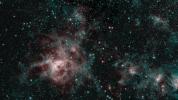
|
-
PIA23646:
-
Tarantula Nebula Spitzer 2-Color Image
Full Resolution:
TIFF
(112.2 MB)
JPEG
(5.08 MB)
|

|
2020-01-07 |
|
SOFIA
|
|
2608x3022x3 |

|
-
PIA23409:
-
SOFIA Reveals How the Swan Nebula Hatched
Full Resolution:
TIFF
(15.44 MB)
JPEG
(401.7 kB)
|

|
2019-10-30 |
|
Spitzer Space Telescope
|
Spitzer Space Telescope
|
1041x586x3 |
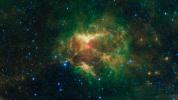
|
-
PIA23403:
-
The Jack-o-Lantern Nebula
Full Resolution:
TIFF
(1.756 MB)
JPEG
(118.5 kB)
|

|
2019-09-30 |
|
Spitzer Space Telescope
|
Spitzer Space Telescope
|
3250x3250x3 |
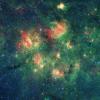
|
-
PIA23402:
-
Spitzer Spots Bubbles and Bow Shocks
Full Resolution:
TIFF
(31.7 MB)
JPEG
(1.693 MB)
|

|
2019-05-30 |
|
Spitzer Space Telescope
|
IRAC
|
14391x6232x3 |
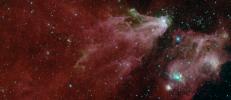
|
-
PIA23127:
-
Cepheus C and Cepheus B Region by Spitzer (One-Instrument)
Full Resolution:
TIFF
(237.3 MB)
JPEG
(9.239 MB)
|

|
2019-05-30 |
|
Spitzer Space Telescope
|
IRAC
MIPS
|
14391x6232x3 |
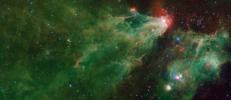
|
-
PIA23126:
-
Cepheus C and Cepheus B Region by Spitzer (Two-Instrument)
Full Resolution:
TIFF
(233.5 MB)
JPEG
(6.984 MB)
|

|
2019-03-27 |
|
Spitzer Space Telescope
|
IRAC
|
4600x3000x3 |

|
-
PIA23121:
-
Space Butterfly
Full Resolution:
TIFF
(29.94 MB)
JPEG
(1.244 MB)
|

|
2018-10-23 |
|
Spitzer Space Telescope
|
IRAC
|
5000x1848x3 |
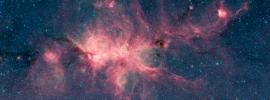
|
-
PIA22567:
-
Cat's Paw Image 2
Full Resolution:
TIFF
(27.74 MB)
JPEG
(1.843 MB)
|

|
2018-10-23 |
|
Spitzer Space Telescope
|
IRAC
|
5000x1848x3 |
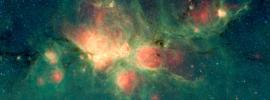
|
-
PIA22568:
-
Cat's Paw Image 1
Full Resolution:
TIFF
(27.74 MB)
JPEG
(1.447 MB)
|

|
2018-01-11 |
|
Hubble Space Telescope
Spitzer Space Telescope
|
|
2000x1125x3 |

|
-
PIA22089:
-
Visible and Infrared Visualization of the Orion Nebula (Artist's Concept)
Full Resolution:
TIFF
(4.841 MB)
JPEG
(94.93 kB)
|

|
2017-05-10 |
|
Hubble Space Telescope
XMM-Newton
Chandra X-ray Observatory
Spitzer Space Telescope
|
Very Large Array (VLA)
|
1296x1024x3 |
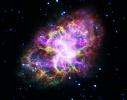
|
-
PIA21474:
-
Crab Nebula from Five Observatories
Full Resolution:
TIFF
(2.823 MB)
JPEG
(119.2 kB)
|

|
2016-10-12 |
Orion
|
Herschel Space Observatory
|
PACS
SPIRE
HIFI
|
5200x7400x3 |

|
-
PIA21073:
-
Ionized Carbon Atoms in Orion
Full Resolution:
TIFF
(80.59 MB)
JPEG
(1.376 MB)
|

|
2016-09-08 |
|
Spitzer Space Telescope
|
Spitzer Space Telescope
|
2125x1195x3 |
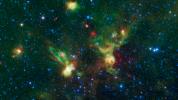
|
-
PIA20917:
-
Enterprising Nebulae
Full Resolution:
TIFF
(7.622 MB)
JPEG
(457.3 kB)
|

|
2016-05-27 |
|
Herschel Space Observatory
|
PACS
SPIRE
|
2112x1452x3 |
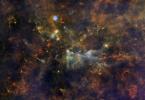
|
-
PIA13500:
-
The Little Fox and the Giant Stars
Full Resolution:
TIFF
(9.204 MB)
JPEG
(393.2 kB)
|

|
2016-04-14 |
|
Spitzer Space Telescope
|
IRAC
Two Micron All Sky Survey (2MASS)
|
4165x2343x3 |
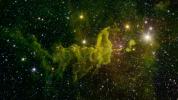
|
-
PIA20357:
-
The Spider Nebula
Full Resolution:
TIFF
(24.67 MB)
JPEG
(1.305 MB)
|

|
2016-01-21 |
|
Hubble Space Telescope
|
Advanced Camera for Surveys
|
3906x3906x3 |
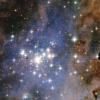
|
-
PIA20468:
-
Hubble Unveils a Tapestry of Dazzling Diamond-Like Stars
Full Resolution:
TIFF
(45.79 MB)
JPEG
(1.43 MB)
|

|
2015-08-20 |
|
Spitzer Space Telescope
|
Spitzer Space Telescope
|
4800x2700x3 |
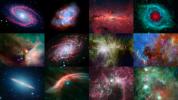
|
-
PIA19872:
-
NASA's Spitzer 12th Anniversary Space Calendar
Full Resolution:
TIFF
(38.9 MB)
JPEG
(1.945 MB)
|

|
2015-08-20 |
|
Spitzer Space Telescope
|
Spitzer Space Telescope
|
3050x2630x3 |
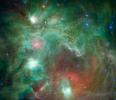
|
-
PIA19836:
-
Seeing Beyond the 'Monkey Head'
Full Resolution:
TIFF
(24.08 MB)
JPEG
(444.6 kB)
|

|
2014-12-19 |
|
Spitzer Space Telescope
|
IRAC
|
6250x3800x3 |

|
-
PIA18905:
-
Horsehead of a Different Color
Full Resolution:
TIFF
(71.28 MB)
JPEG
(848.6 kB)
|

|
2014-10-22 |
|
Chandra X-ray Observatory
Wide-field Infrared Survey Explorer (WISE)
|
|
3600x3600x3 |
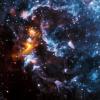
|
-
PIA18848:
-
Face Illusion in the Cosmic Clouds
Full Resolution:
TIFF
(38.89 MB)
JPEG
(573.6 kB)
|

|
2014-08-27 |
|
Hubble Space Telescope
Spitzer Space Telescope
|
|
3000x2000x3 |
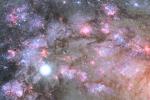
|
-
PIA18471:
-
A Cauldron of Star Birth in the Center of a Young Galaxy (Artist's Concept)
Full Resolution:
TIFF
(18.01 MB)
JPEG
(1.482 MB)
|

|
2014-05-28 |
|
Spitzer Space Telescope
|
IRAC
Two Micron All Sky Survey (2MASS)
|
2251x1476x3 |
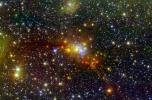
|
-
PIA18014:
-
The 'Serpent' Star-Forming Cloud Spawns Stars
Full Resolution:
TIFF
(9.972 MB)
JPEG
(628.5 kB)
|

|
2014-05-07 |
|
Chandra X-ray Observatory
Spitzer Space Telescope
|
|
3600x3600x3 |
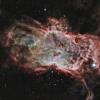
|
-
PIA18249:
-
Inside the Flame Nebula
Full Resolution:
TIFF
(38.89 MB)
JPEG
(874.9 kB)
|

|
2014-04-02 |
Helix Nebula
|
Hubble Space Telescope
|
Hubble Space Telescope
|
16000x16000x3 |
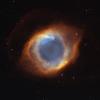
|
-
PIA18164:
-
Iridescent Glory of Nearby Helix Nebula
Full Resolution:
TIFF
(768.1 MB)
JPEG
(27.72 MB)
|

|
2014-01-30 |
|
Hubble Space Telescope
|
WFPC2
|
1005x1005x3 |
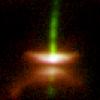
|
-
PIA17835:
-
Dark Disks Around Young Stars
Full Resolution:
TIFF
(3.031 MB)
JPEG
(56.86 kB)
|

|
2014-01-29 |
|
Wide-field Infrared Survey Explorer (WISE)
|
WISE Telescope
|
4095x4095x3 |
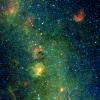
|
-
PIA17834:
-
Storm of Stars in the Trifid Nebula
Full Resolution:
TIFF
(50.32 MB)
JPEG
(2.289 MB)
|

|
2014-01-09 |
|
NuSTAR
|
NuSTAR
|
2500x2500x3 |
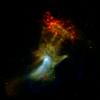
|
-
PIA17566:
-
High-Energy X-ray View of 'Hand of God'
Full Resolution:
TIFF
(18.76 MB)
JPEG
(172.9 kB)
|

|
2013-12-12 |
|
Wide-field Infrared Survey Explorer (WISE)
|
WISE Telescope
|
9334x7107x3 |
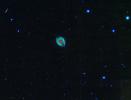
|
-
PIA17564:
-
March of Asteroids Across Dying Star
Full Resolution:
TIFF
(199.1 MB)
JPEG
(8.773 MB)
|

|
2013-12-12 |
|
Herschel Space Observatory
Hubble Space Telescope
|
PACS
WFPC2
|
3864x3864x3 |
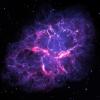
|
-
PIA17563:
-
Crab Nebula, as Seen by Herschel and Hubble
Full Resolution:
TIFF
(44.81 MB)
JPEG
(1.205 MB)
|

|
2013-10-30 |
|
Wide-field Infrared Survey Explorer (WISE)
|
WISE Telescope
|
9163x9163x3 |
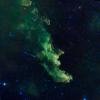
|
-
PIA17553:
-
'Witch Head' Brews Baby Stars
Full Resolution:
TIFF
(252 MB)
JPEG
(7.886 MB)
|

|
2013-10-28 |
|
Spitzer Space Telescope
|
IRAC
|
3600x2023x3 |
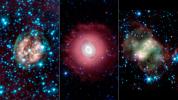
|
-
PIA17552:
-
Death Beckons Three Aging Stars
Full Resolution:
TIFF
(21.86 MB)
JPEG
(480 kB)
|

|
2013-10-25 |
|
Hubble Space Telescope
|
ALMA
Hubble Space Telescope
|
1762x1762x3 |
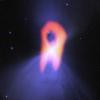
|
-
PIA17551:
-
Ghostly 'Boomerang'
Full Resolution:
TIFF
(9.318 MB)
JPEG
(384.9 kB)
|

|
2013-09-12 |
Sol (our sun)
|
Voyager
|
|
8192x4610x3 |
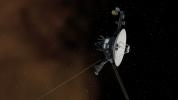
|
-
PIA17462:
-
Voyager 1 Entering Interstellar Space (Artist Concept)
Full Resolution:
TIFF
(113.3 MB)
JPEG
(938.1 kB)
|

|
2013-08-23 |
|
Spitzer Space Telescope
|
IRAC
|
6400x6400x3 |
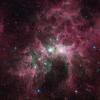
|
-
PIA17257:
-
The Tortured Clouds of Eta Carinae
Full Resolution:
TIFF
(122.9 MB)
JPEG
(5.541 MB)
|

|
2013-08-21 |
Asteroid
|
Wide-field Infrared Survey Explorer (WISE)
|
WISE Telescope
|
1600x1600x3 |
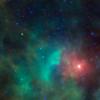
|
-
PIA17255:
-
Asteroid Zips By Orion
Full Resolution:
TIFF
(7.683 MB)
JPEG
(163.5 kB)
|

|
2013-08-15 |
Mercury
|
MESSENGER
|
MDIS - Wide Angle
|
1438x1400x3 |
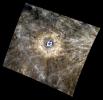
|
-
PIA17409:
-
Nebula? No, It's the Cat's Eye Crater!
Full Resolution:
TIFF
(6.042 MB)
JPEG
(263.1 kB)
|

|
2013-05-24 |
|
Spitzer Space Telescope
|
IRAC
|
960x960x3 |
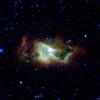
|
-
PIA17015:
-
Infrared Iris
Full Resolution:
TIFF
(2.766 MB)
JPEG
(58.18 kB)
|

|
2013-04-19 |
|
Hubble Space Telescope
|
WFC3
|
2704x2826x3 |

|
-
PIA16008:
-
Hubble Sees a Horsehead of a Different Color
Full Resolution:
TIFF
(18.43 MB)
JPEG
(700.1 kB)
|

|
2013-04-03 |
|
Chandra X-ray Observatory
Hubble Space Telescope
Spitzer Space Telescope
|
Chandra X-ray Telescope
IRAC
Visible-Light
|
3600x3600x3 |
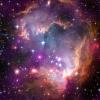
|
-
PIA16884:
-
Taken Under the 'Wing' of the Small Magellanic Cloud
Full Resolution:
TIFF
(38.89 MB)
JPEG
(1.685 MB)
|

|
2013-03-19 |
|
Herschel Space Observatory
|
Herschel Telescope
|
3100x2260x3 |
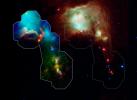
|
-
PIA16839:
-
Infant Stars Peek Out from Dusty Cradles
Full Resolution:
TIFF
(21.03 MB)
JPEG
(339.9 kB)
|

|
2013-03-05 |
Rosette Nebula
|
Herschel Space Observatory
|
PACS
SPIRE
|
4207x3822x3 |
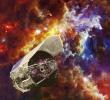
|
-
PIA16871:
-
Herschel's Cool Universe (Artist's Concept)
Full Resolution:
TIFF
(48.27 MB)
JPEG
(1.26 MB)
|

|
2013-02-05 |
Orion
|
Wide-field Infrared Survey Explorer (WISE)
|
WISE Telescope
|
5401x5400x3 |

|
-
PIA16684:
-
The Cosmic Hearth
Full Resolution:
TIFF
(87.54 MB)
JPEG
(1.346 MB)
|

|
2012-10-03 |
|
Galaxy Evolution Explorer (GALEX)
Spitzer Space Telescope
|
IRAC
Ultraviolet/Visible Camera
|
6019x6019x3 |
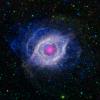
|
-
PIA15817:
-
The Helix Nebula: Unraveling at the Seams
Full Resolution:
TIFF
(108.7 MB)
JPEG
(3.087 MB)
|

|
2012-07-02 |
|
Wide-field Infrared Survey Explorer (WISE)
|
WISE Telescope
|
5525x5535x3 |
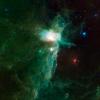
|
-
PIA15635:
-
A Different View of the Flame Nebula
Full Resolution:
TIFF
(91.79 MB)
JPEG
(1.767 MB)
|

|
2012-05-16 |
Helix Nebula
|
Galaxy Evolution Explorer (GALEX)
|
Ultraviolet/Visible Camera
|
2920x2920x3 |

|
-
PIA15658:
-
NGC 7293, the Helix Nebula
Full Resolution:
TIFF
(25.58 MB)
JPEG
(884.6 kB)
|

|
2012-04-17 |
|
Chandra X-ray Observatory
Hubble Space Telescope
Spitzer Space Telescope
|
|
3600x2880x3 |
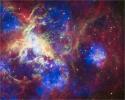
|
-
PIA14415:
-
A New View of the Tarantula Nebula
Full Resolution:
TIFF
(31.1 MB)
JPEG
(1.774 MB)
|

|
2012-03-29 |
|
SOFIA
|
FORCAST
|
1512x2019x3 |

|
-
PIA15420:
-
NASA's SOFIA Captures Images of the Planetary Nebula M2-9
Full Resolution:
TIFF
(9.175 MB)
JPEG
(78.26 kB)
|

|
2012-03-22 |
|
Galaxy Evolution Explorer (GALEX)
|
Ultraviolet/Visible Camera
|
6000x6000x3 |
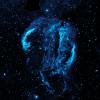
|
-
PIA15415:
-
Cygnus Loop Nebula
Full Resolution:
TIFF
(108 MB)
JPEG
(5.259 MB)
|

|
2012-03-08 |
|
Spitzer Space Telescope
|
IRAC
|
3000x2400x3 |

|
-
PIA15413:
-
An Audience Favorite Nebula
Full Resolution:
TIFF
(21.6 MB)
JPEG
(964.2 kB)
|

|
2012-02-29 |
|
Herschel Space Observatory
Spitzer Space Telescope
|
Herschel Telescope
IRAC
|
2800x2880x3 |

|
-
PIA13959:
-
Orion's Rainbow of Infrared Light
Full Resolution:
TIFF
(24.19 MB)
JPEG
(321.2 kB)
|

|
2012-01-18 |
|
Herschel Space Observatory
XMM-Newton
|
PACS
SPIRE
XMM-Newton X-ray
|
1352x1353x3 |
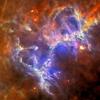
|
-
PIA15260:
-
Herschel Sees Through Ghostly Pillars
Full Resolution:
TIFF
(5.493 MB)
JPEG
(151 kB)
|

|
2012-01-10 |
|
Wide-field Infrared Survey Explorer (WISE)
|
WISE Telescope
|
13530x4909x3 |
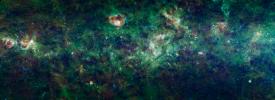
|
-
PIA15256:
-
A Royal Celebration
Full Resolution:
TIFF
(199.3 MB)
JPEG
(16.67 MB)
|

|
2012-01-10 |
|
Herschel Space Observatory
Spitzer Space Telescope
|
IRAC
SPIRE
PACS
|
15500x15500x3 |
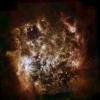
|
-
PIA15254:
-
Dusty Space Cloud
Full Resolution:
TIFF
(720.8 MB)
JPEG
(22.21 MB)
|

|
2011-12-22 |
|
Wide-field Infrared Survey Explorer (WISE)
|
WISE Telescope
|
4260x4800x3 |

|
-
PIA15252:
-
A Cosmic Wreath
Full Resolution:
TIFF
(61.34 MB)
JPEG
(892.8 kB)
|

|
2011-12-12 |
|
Spitzer Space Telescope
|
|
7600x5500x3 |
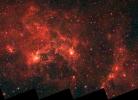
|
-
PIA14885:
-
Dragonfish Coming At You in Infrared
Full Resolution:
TIFF
(125.4 MB)
JPEG
(8.273 MB)
|

|
2011-11-16 |
|
Chandra X-ray Observatory
Spitzer Space Telescope
|
Chandra X-ray Telescope
IRAC
|
3600x3069x3 |
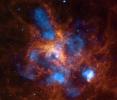
|
-
PIA15079:
-
30 Doradus: The Growing Tarantula Within
Full Resolution:
TIFF
(33.15 MB)
JPEG
(457 kB)
|

|
2011-11-09 |
|
Wide-field Infrared Survey Explorer (WISE)
|
WISE Telescope
|
5200x5200x3 |
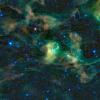
|
-
PIA14874:
-
Dusty Reflections in the Scorpion's Claws
Full Resolution:
TIFF
(81.12 MB)
JPEG
(2.361 MB)
|

|
2011-10-26 |
|
Wide-field Infrared Survey Explorer (WISE)
|
WISE Telescope
|
3300x3300x3 |
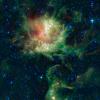
|
-
PIA14873:
-
Does 'Pacman' Have Teeth?
Full Resolution:
TIFF
(32.67 MB)
JPEG
(778.2 kB)
|

|
2011-09-29 |
Mercury
|
MESSENGER
|
Gamma-Ray and Neutron Spectrometer (GRNS)
|
5333x2432x3 |
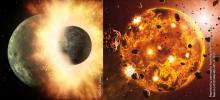
|
-
PIA14850:
-
How Was Mercury Made?
Full Resolution:
TIFF
(38.91 MB)
JPEG
(1.058 MB)
|

|
2011-09-28 |
NGC 281
|
Chandra X-ray Observatory
Spitzer Space Telescope
|
Chandra X-ray Telescope
IRAC
|
3600x2719x3 |
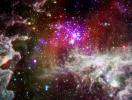
|
-
PIA14731:
-
The 'Pacman Nebula'
Full Resolution:
TIFF
(29.37 MB)
JPEG
(797.6 kB)
|

|
2011-09-16 |
|
Spitzer Space Telescope
|
IRAC
|
1757x1417x3 |
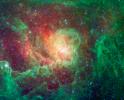
|
-
PIA14728:
-
Into the Depths of the Lagoon Nebula
Full Resolution:
TIFF
(7.481 MB)
JPEG
(449.4 kB)
|

|
2011-08-15 |
|
Spitzer Space Telescope
|
|
1200x847x3 |
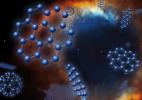
|
-
PIA14548:
-
Graphene in Space (Artist's Concept)
Full Resolution:
TIFF
(3.053 MB)
JPEG
(78.04 kB)
|

|
2011-08-10 |
Helix Nebula
|
Spitzer Space Telescope
|
IRAC
|
2800x1400x3 |
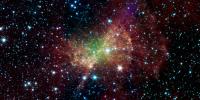
|
-
PIA14417:
-
Weighing in on the Dumbbell Nebula
Full Resolution:
TIFF
(11.76 MB)
JPEG
(495.8 kB)
|

|
2011-08-01 |
|
Herschel Space Observatory
Spitzer Space Telescope
|
HIFI
IRAC
|
3000x2400x3 |
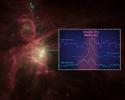
|
-
PIA14407:
-
Oxygen in Orion
Full Resolution:
TIFF
(21.6 MB)
JPEG
(308.4 kB)
|

|
2011-08-01 |
|
Herschel Space Observatory
Spitzer Space Telescope
|
HIFI
IRAC
|
3000x2400x3 |
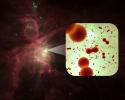
|
-
PIA14406:
-
Oxygen No Longer Lost in Space
Full Resolution:
TIFF
(21.6 MB)
JPEG
(276.5 kB)
|

|
2011-06-30 |
|
Spitzer Space Telescope
|
IRAC
|
3250x2050x3 |
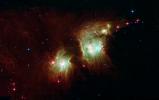
|
-
PIA14106:
-
Making a Spectacle of Star Formation in Orion
Full Resolution:
TIFF
(19.99 MB)
JPEG
(597.6 kB)
|

|
2011-06-24 |
|
Wide-field Infrared Survey Explorer (WISE)
|
WISE Telescope
|
6000x4000x3 |
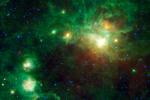
|
-
PIA14105:
-
Star Formation Everywhere You Look
Full Resolution:
TIFF
(72 MB)
JPEG
(1.391 MB)
|

|
2011-06-15 |
|
Spitzer Space Telescope
|
IRAC
MIPS
|
3600x3600x3 |
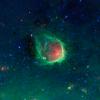
|
-
PIA14104:
-
In the Blackest Night, a Green Ring Nebula
Full Resolution:
TIFF
(38.88 MB)
JPEG
(1.234 MB)
|

|
2011-06-13 |
|
Wide-field Infrared Survey Explorer (WISE)
|
WISE Telescope
|
7700x6300x3 |
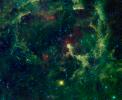
|
-
PIA14103:
-
Blowin' in the Stellar Wind
Full Resolution:
TIFF
(145.5 MB)
JPEG
(3.896 MB)
|

|
2011-06-09 |
|
Wide-field Infrared Survey Explorer (WISE)
|
WISE Telescope
|
6450x5850x3 |
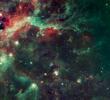
|
-
PIA14102:
-
Star Formation in the Heart of the Swan
Full Resolution:
TIFF
(113.2 MB)
JPEG
(2.875 MB)
|

|
2011-05-26 |
|
Spitzer Space Telescope
|
IRAC
|
3220x6000x3 |

|
-
PIA14101:
-
Stars Adorn Orion's Sword
Full Resolution:
TIFF
(57.96 MB)
JPEG
(859.1 kB)
|

|
2011-05-05 |
|
Wide-field Infrared Survey Explorer (WISE)
|
WISE Telescope
|
5500x2830x3 |
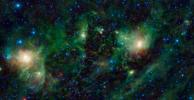
|
-
PIA14092:
-
Nebulae: Not as Close as They Appear
Full Resolution:
TIFF
(46.7 MB)
JPEG
(1.215 MB)
|

|
2011-04-25 |
|
Wide-field Infrared Survey Explorer (WISE)
|
WISE Telescope
|
5400x6400x3 |

|
-
PIA14091:
-
The 'van Gogh' of the Infrared Sky
Full Resolution:
TIFF
(103.7 MB)
JPEG
(2.38 MB)
|

|
2011-04-14 |
|
Wide-field Infrared Survey Explorer (WISE)
|
WISE Telescope
|
15800x14700x3 |
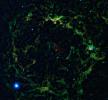
|
-
PIA14040:
-
Orion's Big Head Revealed in Infrared
Full Resolution:
TIFF
(696.8 MB)
JPEG
(24.25 MB)
|

|
2011-04-13 |
|
Herschel Space Observatory
|
Infrared Telescope
|
1735x1447x3 |
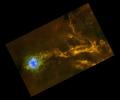
|
-
PIA14038:
-
Star-Studded Strings around Cocoon Nebula
Full Resolution:
TIFF
(7.543 MB)
JPEG
(112 kB)
|

|
2011-04-08 |
|
Wide-field Infrared Survey Explorer (WISE)
|
WISE Telescope
|
6400x6400x3 |
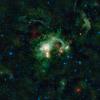
|
-
PIA13995:
-
WISE Eyes Evolution of Massive Stars
Full Resolution:
TIFF
(122.9 MB)
JPEG
(3.002 MB)
|

|
2011-04-01 |
|
Wide-field Infrared Survey Explorer (WISE)
|
WISE Telescope
|
10300x10100x3 |
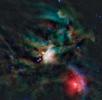
|
-
PIA13974:
-
WISE Unveils a Treasure Trove of Beauty
Full Resolution:
TIFF
(312.1 MB)
JPEG
(4.682 MB)
|

|
2011-03-17 |
|
Wide-field Infrared Survey Explorer (WISE)
|
WISE Telescope
|
1600x1600x3 |
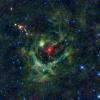
|
-
PIA13933:
-
A Celestial Shamrock
Full Resolution:
TIFF
(7.693 MB)
JPEG
(399.7 kB)
|

|
2011-03-04 |
|
Wide-field Infrared Survey Explorer (WISE)
|
WISE Telescope
|
4000x2800x3 |
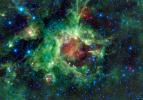
|
-
PIA13904:
-
Pointing a Finger at Star Formation
Full Resolution:
TIFF
(33.6 MB)
JPEG
(1.106 MB)
|

|
2011-03-01 |
|
Wide-field Infrared Survey Explorer (WISE)
|
WISE Telescope
|
1600x1600x3 |
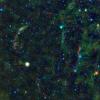
|
-
PIA13885:
-
Beyond the Veil
Full Resolution:
TIFF
(7.693 MB)
JPEG
(703.6 kB)
|

|
2011-02-19 |
|
Wide-field Infrared Survey Explorer (WISE)
|
WISE Telescope
|
4095x3234x3 |
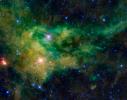
|
-
PIA13459:
-
Supergiant Star Near Giraffe's Hind Foot
Full Resolution:
TIFF
(39.73 MB)
JPEG
(1.08 MB)
|

|
2011-02-10 |
|
Spitzer Space Telescope
|
IRAC
|
6800x6800x3 |

|
-
PIA13845:
-
North America Nebula in Different Lights
Full Resolution:
TIFF
(138.7 MB)
JPEG
(7.547 MB)
|

|
2011-02-10 |
|
Spitzer Space Telescope
|
IRAC
MIPS
|
6800x6800x3 |
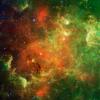
|
-
PIA13844:
-
An Extended Stellar Family
Full Resolution:
TIFF
(138.7 MB)
JPEG
(5.829 MB)
|

|
2011-02-10 |
|
Spitzer Space Telescope
|
IRAC
|
6800x6800x3 |
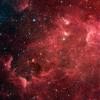
|
-
PIA13843:
-
The Case of the Disappearing Continent
Full Resolution:
TIFF
(138.7 MB)
JPEG
(8.163 MB)
|

|
2011-01-06 |
|
Wide-field Infrared Survey Explorer (WISE)
|
WISE Telescope
|
4095x4095x3 |
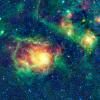
|
-
PIA13453:
-
WISE Catches the Lagoon Nebula in Center of Action
Full Resolution:
TIFF
(50.31 MB)
JPEG
(1.968 MB)
|

|
2011-01-04 |
|
Wide-field Infrared Survey Explorer (WISE)
|
WISE Telescope
|
4000x4000x3 |
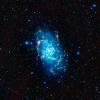
|
-
PIA13452:
-
WISE Spies a Galactic Neighbor
Full Resolution:
TIFF
(48 MB)
JPEG
(1.646 MB)
|

|
2010-12-22 |
|
Wide-field Infrared Survey Explorer (WISE)
|
WISE Telescope
|
3700x3700x3 |
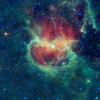
|
-
PIA13451:
-
Chasing Chickens in the Lambda Centauri Nebula
Full Resolution:
TIFF
(41.07 MB)
JPEG
(1.406 MB)
|

|
2010-12-09 |
|
Wide-field Infrared Survey Explorer (WISE)
|
WISE Telescope
|
4095x4095x3 |
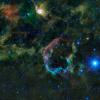
|
-
PIA13449:
-
An Explosion of Infrared Color
Full Resolution:
TIFF
(50.31 MB)
JPEG
(1.217 MB)
|

 Planetary Data System
Planetary Data System



















































































































